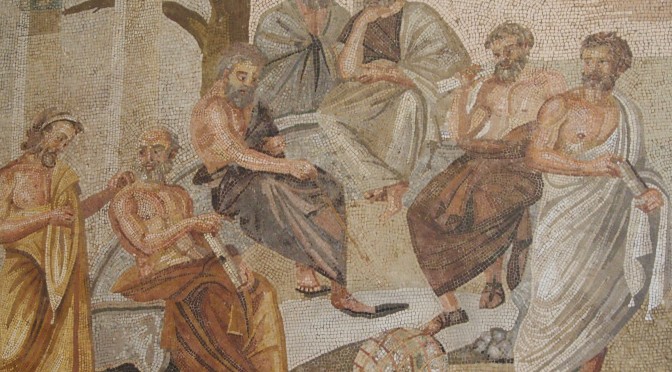Scholars from Europe, North America, and Australia gathered to Naples on 30 June – 4 July 2015 to participate in the Fifth Enoch Seminar Nangeroni Meeting ”Second Temple Jewish Paideia in its Ancient and Hellenistic Contexts”. The organisers of the conference – Jason Zurawski, Gabriele Boccaccini, and Luca Arcari – had compiled a fascinating programme of academic papers and field trips.
The main sessions focussed on aspects of education from the ancient Near East until the rabbinic period. Steve Tinney spoke about education in Mesopotamia and William Schniedewind on the same topic in the context of ancient Israel. Two sessions were dedicated to Jewish authors who wrote in Hebrew in the late second temple Judea: Frank Ueberschaer discussed Jewish education in Ben Sira and Matthew Goff the pedagogy reflected in the Dead Sea Scrolls. The diaspora writers were dealt with in the presentations of Benjamin Wright on the Letter of Aristeas and of Gregory Sterling on Philo’s school. The mutually dialogic papers of David deSilva and Tessa Rajak concerned the Jewish and Greek paideia of 4 Maccabees, while Daniel Boyarin opened up the discussion on the rabbinic material.
The informative presentations created plenty of discussion and were complemented by short papers which were divided into parallel sessions. To mention but a few intriguing examples, Francis Borchardt studied the Temple Scroll in the context of Graeco-Roman scholarly texts, Greg Schmidt Goering addressed tactile discipline in Proverbs, and Jacqueline Vayntrub reconsidered the nature of the mashal performance. My presentation was related to my postdoctoral project on wisdom as a way of life; I examined the embodied aspect of wisdom and spoke about the exercises that are attributed to the figure of the sage in Ben Sira’s instruction. The presence of several experts on Ben Sira and Jewish education in the audience guaranteed a lively discussion with valuable insights to be integrated into my research. Thank you to all the participants!

The meetings were held at Università degli Studi di Napoli Federico II, apart from the last session that took place in the beautiful seaside castle of Maschio Angioino. The long days filled with academic programme were enriched by delicious Italian food, a walk in the charming downtown of Naples, a trip to the nearby Pompeii, and the admiration of the Pompeii treasures in the archaeological museum. The exploration of the latter – wandering in the streets of Pompeii, and studying the everyday artefacts as well as the fabulous mosaics, frescoes, and sculptures in the museum – provided a welcome visual addition to the meeting where we were immersed particularly in texts. While multiple topics came up, it was correctly noted that our attempts to gather information about ancient Jewish paideia remain very text-oriented. Furthermore, we tend to focus on texts that present themselves explicitly as instructional, whereas the paideia and formation that takes place in other kinds of contexts such as liturgy – and is thus documented in different types of writings – is still largely undiscussed. Therefore, like in any good meeting, we became aware of the limits of our current understanding of Jewish paideia and of the need to expand the means through which we seek to gain further understanding of the multidimensional topic.
Heartfelt thanks are due to the organisers of this meeting for their efforts and success to create an intellectualy rigorous event on a significant yet understudied topic which will certainly receive more attention in the years to come. It is difficult to imagine a better place than Naples with its ancient roots and Mediterranean vibes to think about Jewish paideia in the second temple and particularly Hellenistic era.

